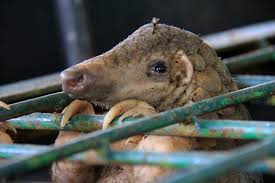
Introduction:
Wildlife trafficking and poaching stand as ominous threats to the delicate balance of our ecosystems. Beyond the apparent loss of iconic species, these illicit activities fuel organized crime, destabilize communities, and undermine global conservation efforts. In this article, we delve into the multifaceted dimensions of wildlife trafficking and poaching, exploring their root causes, impacts, and potential solutions.
Root Causes:
At the heart of wildlife trafficking and poaching lie a confluence of socio-economic factors. Poverty, driven by unequal distribution of resources, pushes individuals toward these illegal activities as a means of survival. Moreover, weak governance, corruption, and inadequate law enforcement create fertile ground for criminal syndicates to operate with impunity. Demand for exotic pets, traditional medicines, and luxury goods further perpetuates the cycle of exploitation, driving the relentless plunder of wildlife.
Impacts:
The ramifications of wildlife trafficking and poaching extend far beyond the realm of biodiversity loss. Ecosystems suffer disruptions, as keystone species vanish, triggering cascading effects on flora and fauna. Furthermore, the loss of biodiversity jeopardizes ecosystem services vital for human well-being, such as pollination, soil fertility, and climate regulation. Economically, countries reliant on wildlife tourism experience significant revenue declines, exacerbating poverty and perpetuating the cycle of exploitation.
Human costs are equally profound, with wildlife trafficking often intertwined with human trafficking, forced labor, and violence. Local communities bear the brunt of these crimes, facing intimidation, displacement, and even death at the hands of poachers and traffickers. Additionally, the spread of zoonotic diseases, exemplified by the COVID-19 pandemic, underscores the interconnectedness of wildlife health and human health, amplifying the urgency of addressing these issues.
Solutions:
Addressing wildlife trafficking and poaching demands a holistic approach encompassing law enforcement, community empowerment, and demand reduction strategies. Strengthening legislation and enhancing cross-border cooperation are crucial for dismantling criminal networks and holding perpetrators accountable. Investing in wildlife rangers, equipping them with training and resources, is essential for safeguarding protected areas and combating poaching on the front lines.
Community involvement is paramount, as local populations hold valuable traditional knowledge and have a vested interest in conservation. Empowering communities through alternative livelihoods, education, and sustainable resource management fosters a sense of ownership and incentivizes conservation efforts. Furthermore, addressing the demand side of the equation necessitates raising awareness, promoting sustainable alternatives, and enforcing regulations to curb the trade in wildlife products.
International cooperation is indispensable, as wildlife trafficking transcends national boundaries. Collaboration between governments, NGOs, and intergovernmental organizations is essential for harmonizing efforts, sharing intelligence, and implementing coordinated responses.
Furthermore, addressing underlying drivers such as poverty, inequality, and governance deficits requires a concerted global effort encompassing sustainable development initiatives, capacity building, and economic empowerment.
Conclusion:
Wildlife trafficking and poaching constitute a global crisis with far-reaching implications for biodiversity, ecosystems, and human well-being. Tackling these issues demands a comprehensive approach addressing root causes, strengthening enforcement, empowering communities, and reducing demand. Only through concerted international cooperation and collective action can we stem the tide of exploitation and preserve our planet’s natural heritage for future generations.